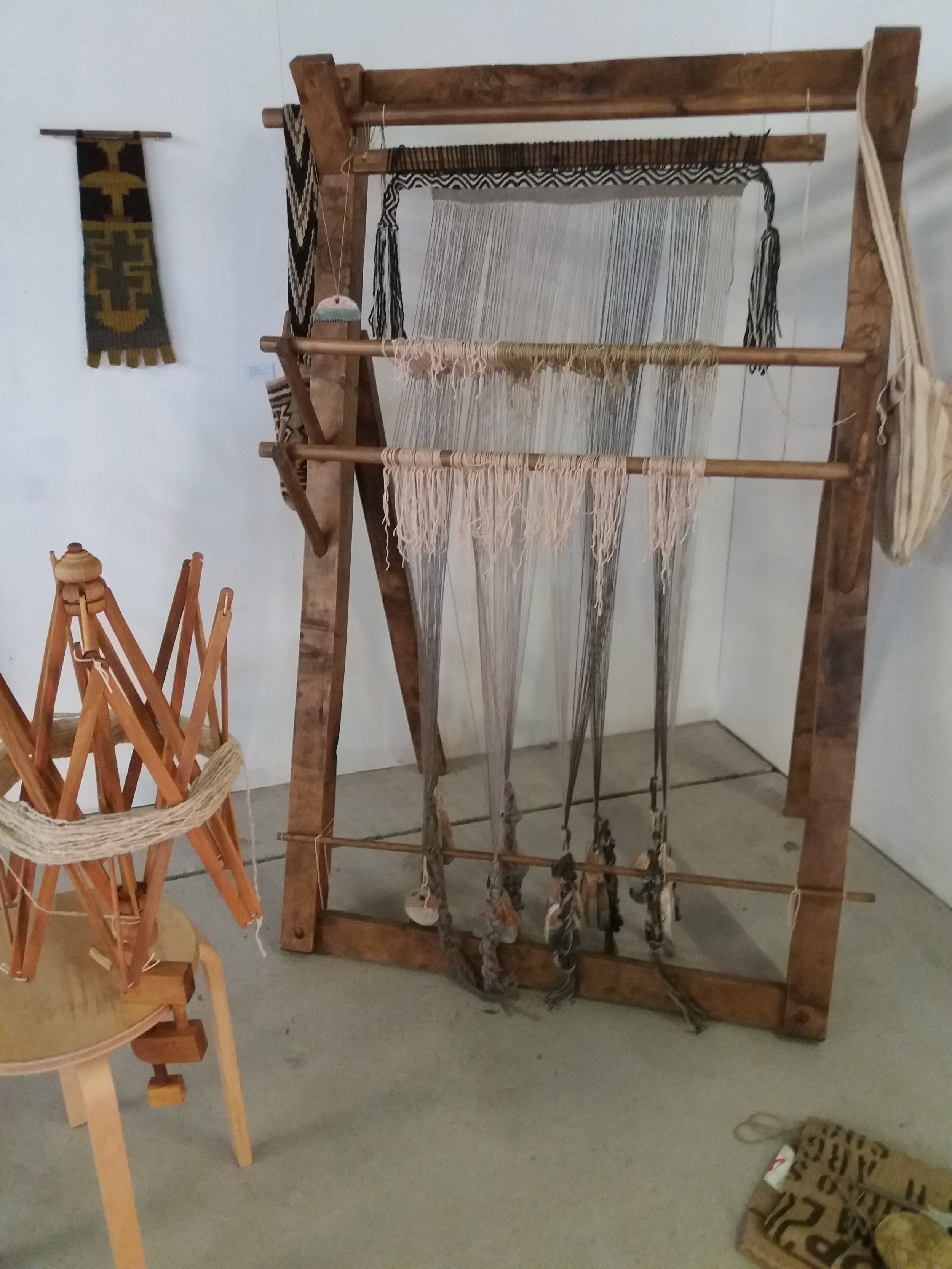Warp Weighted Loom
I feel that it is very important to walk close beside the ancient ancestry that comes hand in hand with weaving as a craft. In order to find out what weaving is in its purest form I felt compelled to create my own looms and weave in methods that have been done for thousands of years. In this way, weaving becomes a ritual of morphic resonance. To weave is to move my body in the same way as my ancestors: to hear the sound of loom weights chiming together, to become aware of the tautness of the cloth between the skeleton of the loom, to see the sunlight beam between the weft as I weave. It is a dance that unravels in front and behind me both honouring the past and maintaining its heritage for the future.
I weave as an offering to: the destiny weaving crones The Fates, Athena & Arachne, dedicated wife Penelope, revengeful Philomela, Frigg the Norse weaving goddess, the frightful Valkyries with severed heads for loom weights, Frau Holda fertility spinner, Norns the fate weaving Giantesses
I humbly offer my cloth to these myths and the ancestry that cradles the craft.
Warp Weighted Loom - Gwia
Lily Waugh & Toby Aisbitt
Cornish oak hand carved
Handmade ceramic looms weights tin and copper glaze
Cornwall, England 2017
The warp- weighted loom is an ancient form of weaving loom in which the warp yarns hang from a bar supported by upright poles. Bundles of warp threads are tied to hanging weights called loom weights which keep the threads taught.
Evidence of the warp weighted loom appears in the Neolithic period in central Europe. These artifacts are found commonly in Greece, Europe and remaining in use in Scandinavia.
Loom weights have been found in archeological sites across the UK including some found in ‘Britain’s Pompeii’ a 3,000 year old bronze age village perfectly preserved in the Cambridgeshire Fens. The discovery of a loom weight was found alongside some of the most ancient fabric, spindle whorls and spun plant fibres ever found in Europe.





